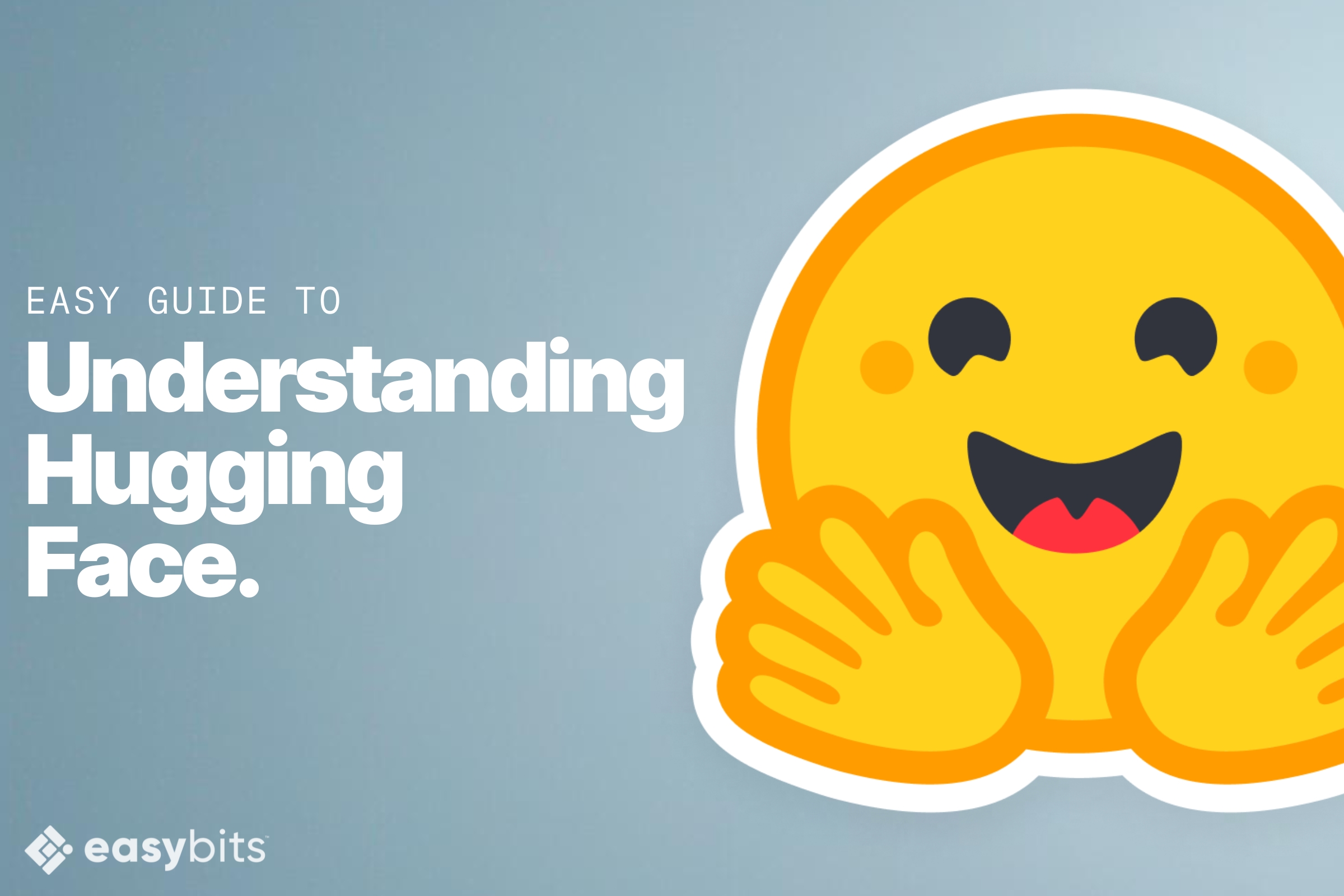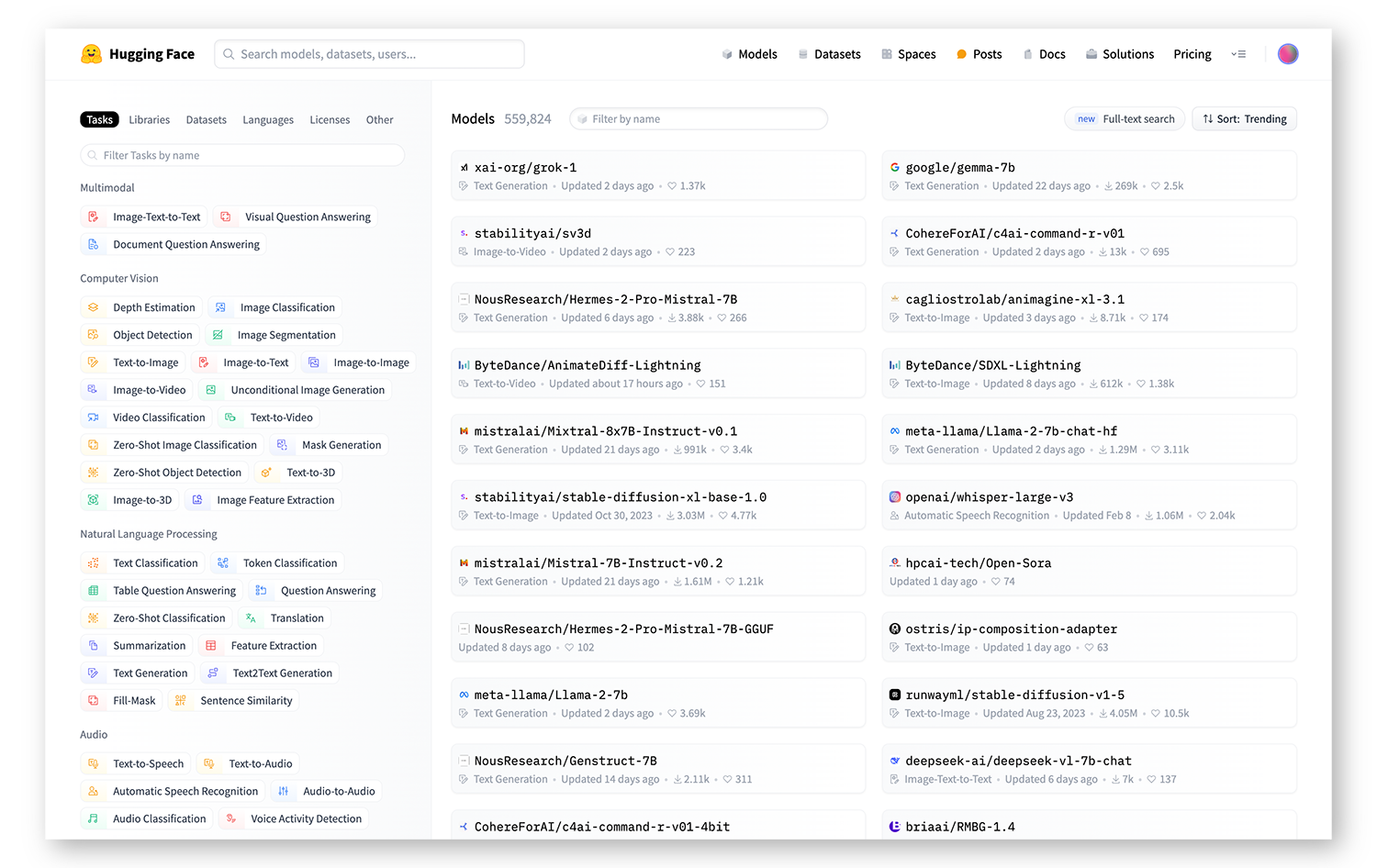💡 easy guide to: Understanding Hugging Face

Hugging Face stands out as a versatile platform offering multiple tools and resources for handling unstructured data, spanning text, images, videos, and audio. I wanted to make it less intimidating for people not familiar with Hugging Face to dive into what makes Hugging Face so unique and explore its innovative features and practical applications that are reshaping the landscape of AI development.
A Glimpse into Hugging Face's Offerings
At first glance, Hugging Face may seem like an enigma with its quirky name, however underneath the hood lies a powerhouse for AI enthusiasts. The platform presents a diverse array of options, from models to datasets, catering to various AI tasks. For instance, if you are delving into image classification, you will be greeted with a wide selection of over 8,000 models.
Take, for instance, the Microsoft ResNet 50 model, a deep neural network with 50 layers that boasts over 14 million downloads last month alone. The platform allows for seamless model testing, providing instantaneous feedback on image classifications, making it a preferred choice for researchers and developers alike.

💡 easy guide example: Suppose you are a developer working on an image recognition project. By leveraging Hugging Face's extensive library of image classification models, you can quickly prototype and test different models to find the most suitable one for your application. This streamlined process accelerates development and enables rapid iteration.
From Emotion Analysis to NSFW Detection
Hugging Face's versatility transcends conventional boundaries, encompassing domains like emotion analysis and content safety. Whether you are analyzing emotions depicted in images or filtering out inappropriate content, Hugging Face offers specialised models tailored to these tasks. Furthermore, the platform can discern between human and AI-generated images, a feature that is increasingly crucial in an era witnessing the proliferation of AI-generated art.
💡 easy guide example: Imagine you are developing a social media monitoring tool that filters out potentially offensive content. By utilizing Hugging Face's content safety models, you can accurately identify and flag inappropriate content, ensuring a safer and more user-friendly platform for your audience.
Language Detection and Text Classification
In the realm of natural language processing, Hugging Face excels with its robust models capable of detecting languages from text data, including lesser-known languages like Hindi. Moreover, the platform extends its language processing capabilities to audio classification and text-to-audio models, facilitating a wide range of applications across diverse linguistic landscapes.
💡 easy guide example: Suppose you are building a multilingual chatbot to engage with users across different regions. Hugging Face's language detection models can help your chatbot identify the language of incoming messages, allowing it to respond appropriately in the user's preferred language, thereby enhancing user experience and engagement.
Spaces: A Community-Driven Innovation Hub
One of the most captivating features of Hugging Face is Spaces, a vibrant hub where the community shares innovative applications ranging from AI-generated art to deepfake detection. Spaces not only showcase the platform's capabilities but also serve as a wellspring of inspiration and collaboration for developers seeking to explore cutting-edge AI applications.
💡 easy guide example: Suppose you are an aspiring AI artist looking to showcase your creations and collaborate with like-minded individuals. Hugging Face's Spaces provides a platform to share your artwork, gather feedback, and collaborate on exciting projects, fostering a sense of community and creativity among AI enthusiasts.
Classrooms and Organizational Support
Hugging Face extends its reach beyond individual developers, offering specialised tools for classrooms and organizational settings. Whether you are an educator looking to integrate AI into your curriculum or part of a corporate team exploring AI solutions, Hugging Face provides a unified platform to facilitate collaboration and innovation.
💡 easy guide example: Imagine you are a university lecturer teaching a course on machine learning. Hugging Face's classroom tools enable you to create assignments, track student progress, and foster collaboration among students, thereby enhancing the learning experience and preparing them for real-world AI projects.
Why Hugging Face Stands Out
Hugging Face's allure lies in its commitment to democratizing AI by offering an extensive library of models, datasets, and community-driven projects. Whether you're a novice exploring AI for the first time or a seasoned expert pushing the boundaries of innovation, Hugging Face provides the tools and resources to bring your AI ideas to fruition, empowering individuals and organizations to harness the transformative potential of AI.
💡 easy guide example: Suppose you are a budding AI enthusiast eager to delve into the world of AI. Hugging Face's beginner-friendly resources, tutorials, and documentation serve as invaluable guides on your AI journey, providing step-by-step instructions and hands-on exercises to help you build your expertise and confidence in AI development.
Embark on Your AI Journey with Hugging Face
In summary, Hugging Face acts as a portal to advanced AI technology, presenting a wealth of resources and opportunities for those passionate about AI to investigate, educate themselves and innovate. Regardless of your interest in image classification, natural language processing or community-led projects, Hugging Face offers an inclusive platform that encourages collaboration and the use of creativity to effect positive change through AI.
Whether you are new to the field of AI or seeking to broaden your knowledge base, it is worth considering starting or continuing your AI journey with Hugging Face.
Unlock the potential of Hugging Face models directly from your Telegram messenger with easybits. Sign up effortlessly by clicking the button below and embark on your AI automation journey today.
Start your journey!Check this video to find out more
